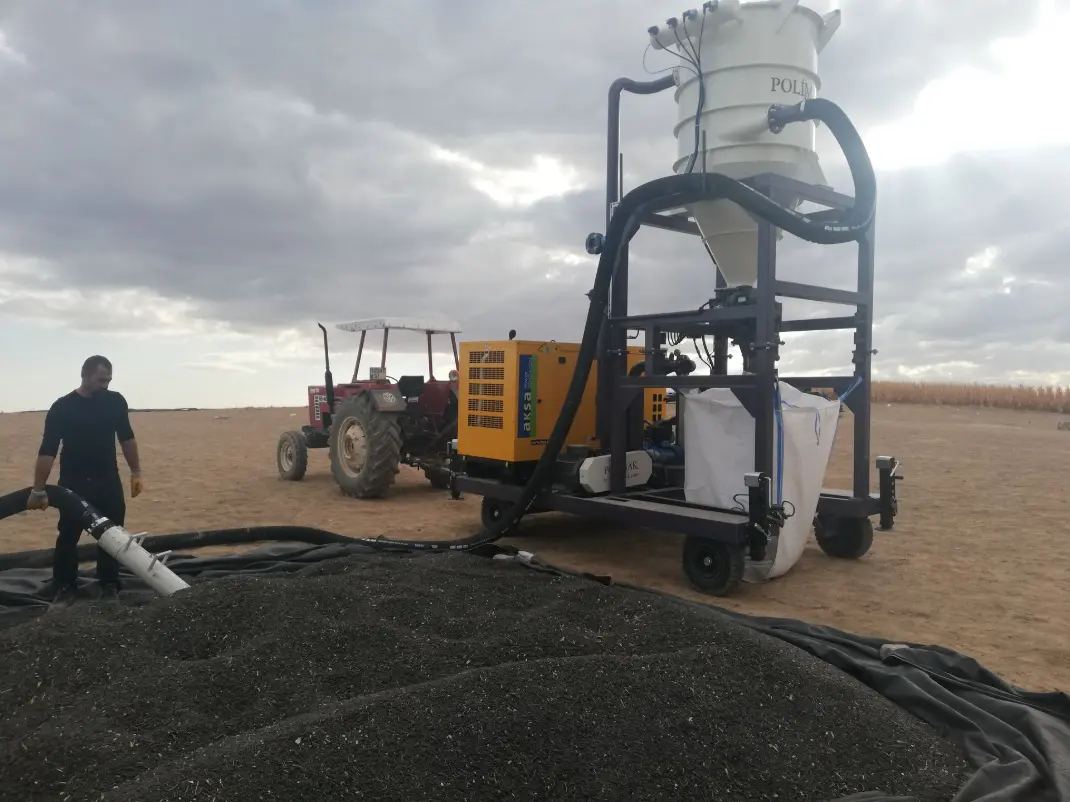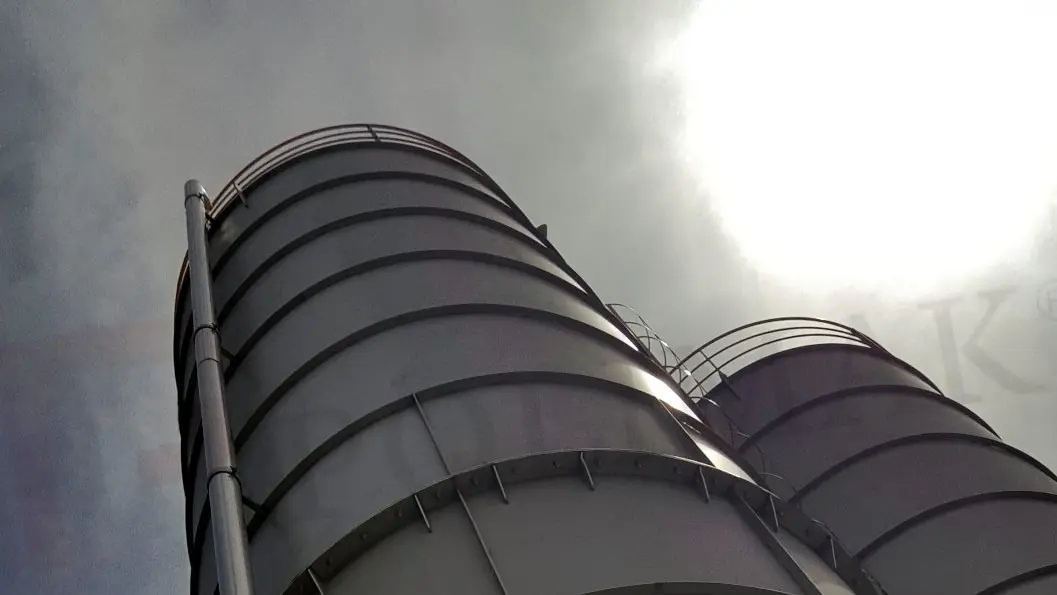Filling from Stockpile
Filling bulk bags (big bags) directly from a stockpile is a common method used in industries dealing with raw materials in loose, bulk form. These materials are typically stored in open yards or covered storage areas before being packaged. This configuration is used in industries such as food, chemicals, and construction, where handling large volumes efficiently while maintaining product quality and cleanliness is essential.

How the System Operates
- Material Handling:
Bulk material is conveyed from the stockpile using equipment such as front loaders, bucket elevators, or screw conveyors. - Filling Station:
The bulk material is transferred to a filling station where bulk bags are positioned. The system usually includes a robust frame to hold and suspend the bags securely. - Controlled Filling:
Material filling process is managed by control gates or conveyors, ensuring each bag is filled accurately without spillage. Operators monitor the material level inside the bag visually or via weight sensors. - Dust Management:
Handling fine powders or granules often leads to high levels of dust emission. A clean working environment is maintained using filtration systems that capture dust at the source.

Key Components
- Bulk Bag Frame: Heavy-duty structure with adjustable bag support for different big bag sizes.
- Feeding Equipment:
Equipment such as front loaders and screw conveyors is commonly used to move material from the stockpile to the filling station. - Weighing System: Integrated load cells or weight sensors to ensure accurate filling.
- Dust Control System:
To capture and control dust, the system uses ventilation equipment, air purifiers, and secure sealing to prevent dust from escaping into the environment. - Bag Closing & Handling
Accessories:
Tools or mechanisms for sealing filled bags and moving them post-filling (e.g., palletizers or forklifts).

Key Advantages and Benefits of Filling from Stockpile
- Flexible Sourcing: Ability to use raw materials directly from open storage without extra handling steps.
- High Capacity: Systems can handle large volumes, ideal for heavy industries like construction and chemicals.
- Cost-Effective: Reduces intermediate storage or transfer equipment, reducing operational costs.
- Dust Reduction: Dust collection systems ensure workplace safety and meet environmental regulations, critical for food and chemical industries.
- Customizable Solutions: Adaptable to different bag sizes, material types (powders, granules, flakes), and filling speeds.

Industry-Specific Examples
- Food Industry:
Bulk bag filling of flour, sugar, or starch is done directly from outdoor stockpiles. Dust-tight filling stations equipped with HEPA filtration are used to avoid contamination. This ensures hygienic packaging and product safety. - Chemical Industry:
Raw chemicals like powdered pigments or catalysts are handled from stockpiles using enclosed screw conveyors. These conveyors feed sealed filling stations to prevent dust and chemical exposure. This configuration protects workers and maintains product integrity. - Construction Industry:
Cement or lime bags are filled straight from stockpiled material using durable elevators designed for heavy loads. Heavy-duty frames support the equipment for durability on construction sites. This supports fast workflow and efficient material handling on site.